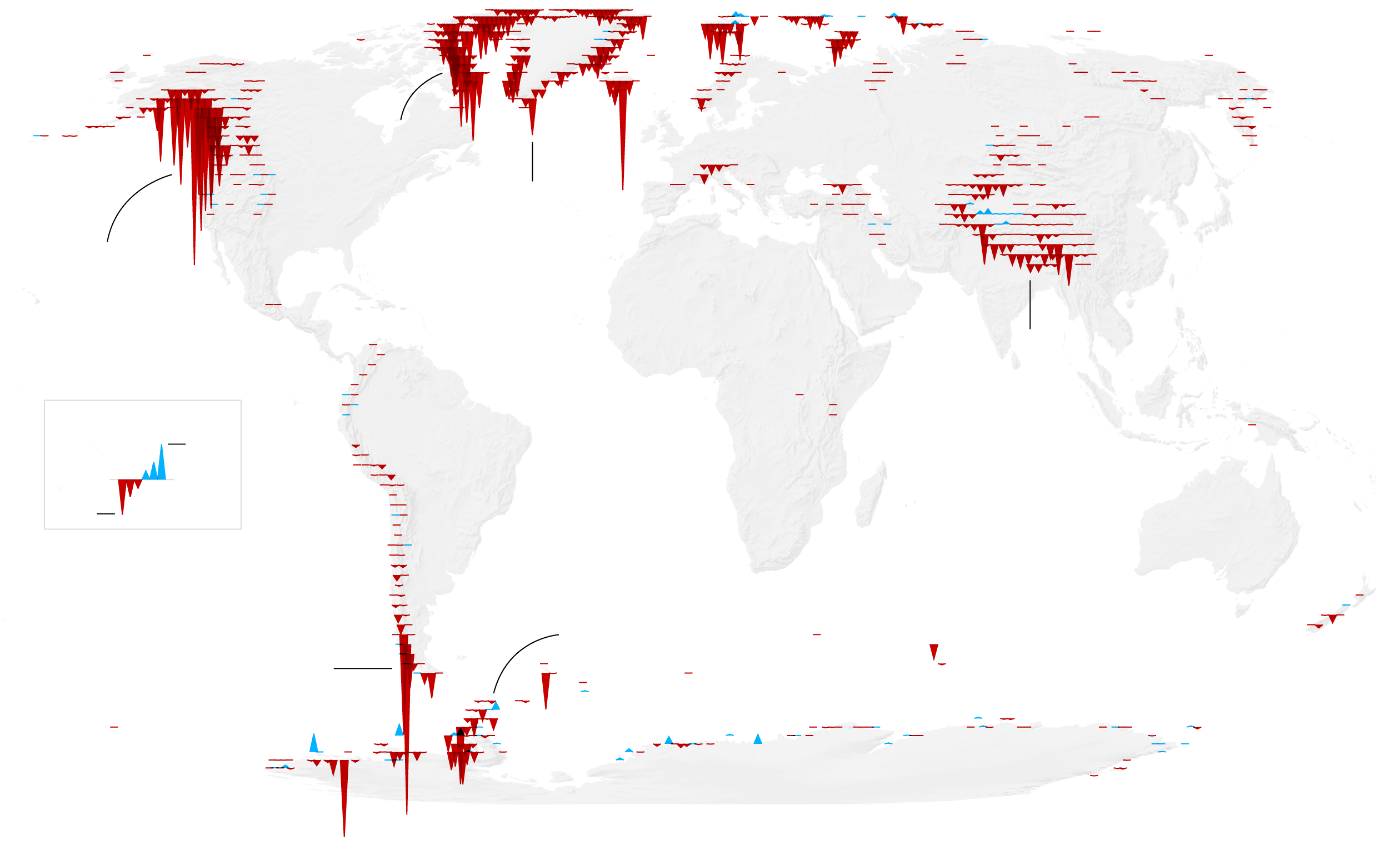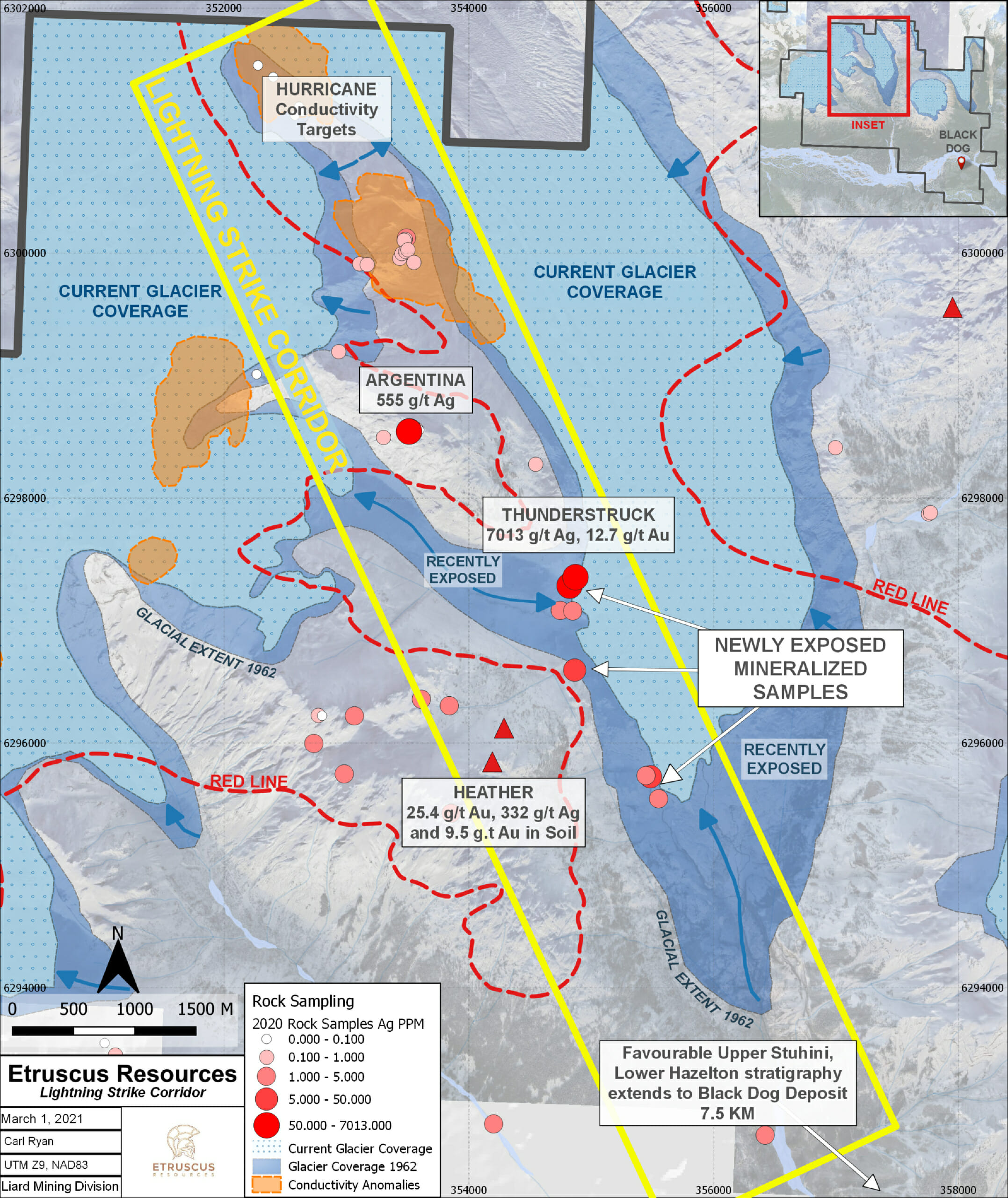What Can Glacial Melting Mean for the Mining Industry?
With climate change escalating rapidly, many believe we’re on the verge entering a new era of environmental changes. Glaciers are melting at twice the speed they were 20 years ago, contributing to rising sea levels.

Protecting Earth from destructive heat, ice acts as a safe covering over our land and the oceans. By reflecting heat back into the space, ice helps to maintain the temperature of our planet cooler. Unfortunately, today, only 10% of the land area on Earth consists of glacial ice. More than 90% of that ice is in Antarctica and the remaining 10% is in Greenland. When glaciers melt, they not only cause the protective heat covering to weaken but also influence ocean currents, thereby causing sea levels to rise.
According to a paper published in Nature, during the period of 2000 and 2019, almost 267 giga tonnes (Gt) of ice was lost every year which amounts up to 21% of rise in sea levels. When converted, this loss is roughly equivalent to submerge the entire surface of England under 2 metres of water each year. This number is alarming as it was at least 47% higher than the melting ice sheets in Greenland and twice as much as that in Antarctica.
Between 2000 and 2019, glaciers lost 267 gigatonnes (Gt) of ice per year, equivalent to 21% of sea-level rise, reveals a paper published in Nature. The authors said the mass loss was equivalent to submerging the surface of England under 2 metres of water every year.
This was 47% higher than the contribution of the melting ice sheet in Greenland and more than twice that from the ice sheet in Antarctica. As a cause of sea-level rise, glacier loss was second only to thermal expansion, which is prompted by higher ocean temperatures.
What are the Causes of Glacial Melting?
The speed with which the glaciers are melting today is alarming, as it might render them extinct in a relatively short span of time. Lets revisit the core causes behind this:
CO2 Emissions
The vast number of industries, transport, deforestation and burning of fossil fuels are generating more greenhouse gases (GHGs) and causing an increase in the atmospheric concentration of carbon dioxide. Such huge amounts of CO2 emissions warm up the planet and cause glaciers to melt.
Warming Oceans
As the earth continues to warm up each day, this warmth is also absorbed by the oceans which affects the melting of marine glaciers. Mostly located near the poles of the earth and the coasts of Alaska, these warmed up oceans are a huge cause of global warming and, consequently, melting glaciers.
Human-Driven Global Heating
One of the core causes of melting glaciers is human-driven global heating. Not only does it affect the coastal regions across the planet but also causes bust flows of melted water from those glaciers which then disrupts the lives of thousands of people living downstream of these glaciers.
What are the Side Effects of Melting Glaciers?
As we mentioned in our previous article, glacial melting has accelerated over the last three decades. Currently, the melting ice makes up 30% of the ocean growth rate. Deglaciation brings with it many consequences, some of which are:
Rise in sea Levels
Since 1961, sea levels have risen by 2.7 centimetres, a portion of the credit for which goes to glacial melting. With the speed that the glaciers are melting, they contain enough ice (170,000 cubic kilometres to be exact) to raise sea levels by half a metre in the near future. If accurate, the ramifications of this are immense.
Impact on the Climate
As the glaciers melt at the poles, the oceanic currents are rapidly slowing down. This phenomenon can create great changes in the global climate and cause a succession of extreme weather events all across the globe.
Vanishing Species
Glaciers are a natural home to many unique species of animals whether they are aquatic or terrestrial, the glacial melting will cause many to fight for their survival. As a result, many species will lose the battle of survival and will be wiped off from the face of the earth.
Reduction in Fresh Water
Yet another consequence of when glaciers melt is that they eventually sink down into the oceans. This causes a reduction in fresh water supply for the whole world. This means that sooner or later there will be less consumable water left for the population which in turn will cause a slow irrigation process as there will be no water left for that as well.
What can we do to Avoid Glacial Melting?
Despite the huge loss of massive glaciers, there is still some time left to save the earth and stop glaciers from totally disappearing. Here is how this goal can be achieved:
Put a Stop to Climate Change
It is crucial to reduce CO2 emissions by at least 45% over the next 10 years in order to decrease climate change. If by 2050 the Co2 emissions are cut down to 0%, there is a good chance we might be able to save the glaciers.
Combining Artificial Icebergs
A project called ‘Refreeze the Arctic’ by Indonesian Architect Faris Rajak Kotahatuhaha presents a good solution to collect water from the melted glaciers and refreeze it in order to create huge iceberg-like hexagonal blocks by desalinating it. Due to their unique shape, these icebergs can then be combined together to create even more gigantic ice masses.
Produce More Glaciers
It might seem absurd, but there is actually a way to produce more glaciers to stop the existing ones from melting. Proposed by the University of Arizona, this solution consists of a process where ice can be collected from below the glaciers using pumps that are driven by wind power and it can be spread over the top. This will cause the glaciers to refreeze and make their consistency strong.
Canada’s Glaciers are Melting
Canada is no stranger to glacial melting as the effects of climate change continue to melt its glaciers with rapid intensity. The Castle Creek Glacier in Cariboo Mountains has shrunk at the rate of 15m a year.
In the past decade, the bluish-white ice of the tongue, or terminus, of the glacier has receded over 200 metres, at a rate of roughly 15 metres a year.
Professor Brian Menounos who researches glaciers stated that the melting rate of Canadian glaciers is almost 2.5 times as much as it was before. A warmer summer and spring season in Canada along with warmer water temperatures in the Pacific Ocean are clear indicators of the fact that the Canadian glaciers are being more affected by climate change than ever. It is roughly estimated that most of Western Canada’s ice fields which span over 25,000 square kilometres will die out by the end of this century.
How can you play this in the stock market?
While the bulk of this article has been focused on the negative impacts of this, the future is uncertain and it is entirely possible new technology will alter dynamics and/or there will be unforeseen events. There is also another very positive aspect to it. With glacial retreat occurring, some prospective miners will be able to turn the odds in their favour. As glacial cover retreats, said miners will uncover more minerals from the Earth that were previously untouched and impenetrable throughout history. Since global warming may be getting rid of the permanent snowpack on many glaciers situated in the Golden triangle of north-western British Columbia, said mining companies will now have access to virgin ground in an extremely mineralized region. This is an extraordinary opportunity for traders and investors to get behind companies that will extract high-grade ore and make the most out of this situation. The map below shows the significant glacial retreat in various regions, and as can be seen, Western Canada is experiencing a very significant shift.

Conclusion
The opportunity to tap into these hidden and previously inaccessible minerals is one the market hasn’t priced in, and the presents an opportunity for the savvy investor. We remain bullish on Etruscus Resources (CSE:ETR) as ETR is resting on a vast polymetallic deposit of Gold, Silver, Copper, Lead and Zinc. The company conducted geological mapping, which showed significant new zones of interest in the Lightning Strike Corridor.

As we mentioned in our previous article, recent exploration has shown incredibly high grade grab-samples, intersected 5.24% Copper, and identified 20 areas of interest within proximity to the “red-line”. The recent acquisition of GT Gold by Newmont is another example of activity in the region.
